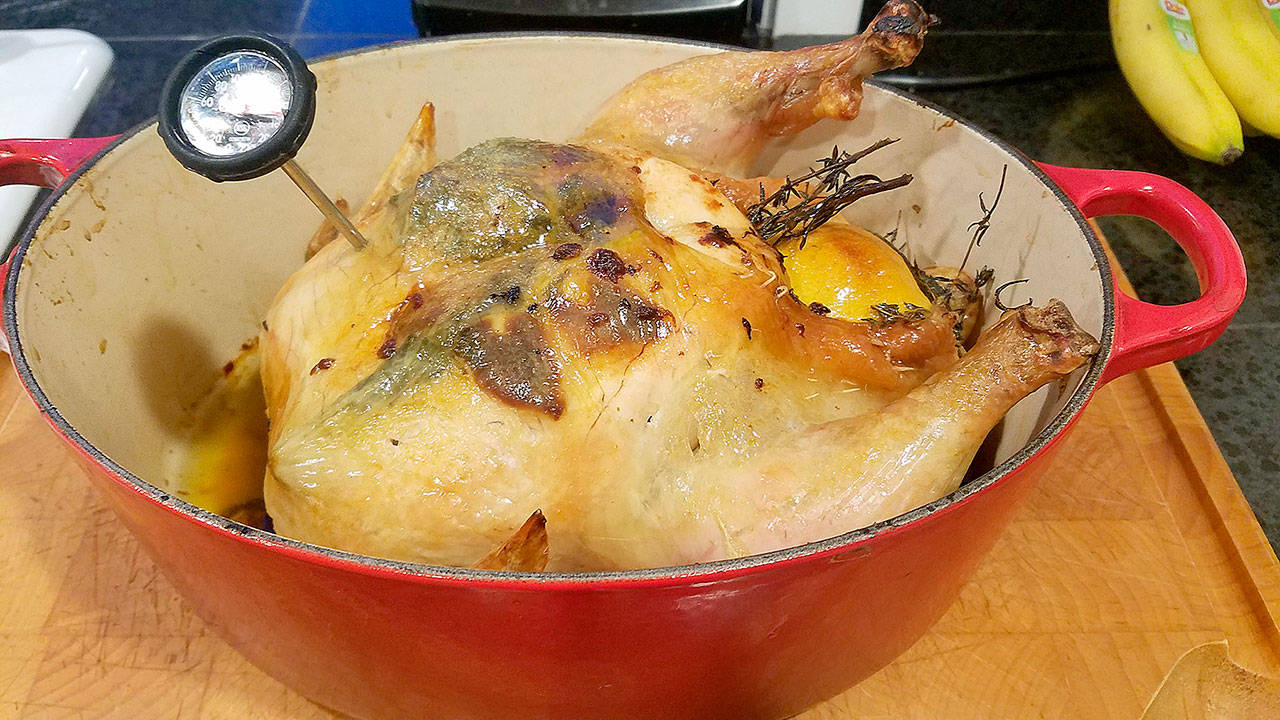It’s Sunday night and I’m teaching my teenager how to roast chicken. But instead of focusing on the finer points of blending herbs, garlic, lemons and salt to create the perfect flavor palate, every direction I give seems to involve avoiding salmonella contamination.
“Take the trash can out from underneath the cabinet before you unwrap the chicken,” I say from my perch on the barstool.
“Why?” he asks.
“Because once you start handling the raw chicken, you don’t want to touch the knob on the cabinet.” I look over at the drawer where we keep the utensils. “And take out the tongs while you’re at it, unless you’re OK with reaching into the carcass to pull out the giblets by hand.”
My fear of contracting salmonella is the only neurosis I actively try to pass along to my children. I blame it on a scary episode of “Oprah” I watched when I was young. The USDA says that salmonella “is a gram-negative, rod-shaped bacilli that can cause diarrheal illness in humans.” But if you whisper the word softly to yourself: “Salmonella,” it sounds like the main character of a nursery rhyme.
Back to my own story. My teenager is asking difficult questions about giblets that I don’t know how to answer. “Do people actually eat this stuff?” he wants to know.
“Um…” I scratch my head. “I guess? Maybe back in the Great Depression? I think you can use them to make gravy. But the tricky thing is you never know if giblets will be floating inside the cavity, contained in a little bag or missing altogether.”
My son holds up the chicken and points to the wrapper. “Mom, it says right here on the label that the giblets are included. It’s not a guessing game. You just have to read the instructions.”
“Interesting.” My cheeks burn red. “Anyway, after you take the giblets out of the chicken and throw them away, you stuff two lemon halves and six cloves of garlic into the carcass.”
“Let me get out the cutting board.” He steps away from the counter.
“Wait!” I shriek. “You’ve got to wash your hands before you open the drawer or you’ll get chicken juice everywhere.”
“Oh, right.” He pumps the soap dispenser and turns on the faucet. “We’re going to need to disinfect these things too when we’re done, I take it?”
“Yup.” I nod my head. “Better get out the fresh herbs from the refrigerator while you’re at it.” I quickly think ahead. “And the olive oil.”
My 14-year-old is up to the task. He peels the garlic, slices the lemon, and shoves them into the chicken. “This feels wrong on so many levels,” he mutters as he stabs sage underneath the skin.
“It gets better,” I say with a chuckle. “Now you’ve got to massage olive oil into the chicken breasts.”
“I did not sign up for this.” He shakes his head.
I point my finger at the soap. “And afterward, wash your hands.”
I never realized how many executive-function skills are required to cook dinner without poisoning anyone. An hour and a half later, dinner turns out delicious — at a piping hot 165 degrees, the safe internal temperature for cooked chicken.
Talk to us
> Give us your news tips.
> Send us a letter to the editor.
> More Herald contact information.

























